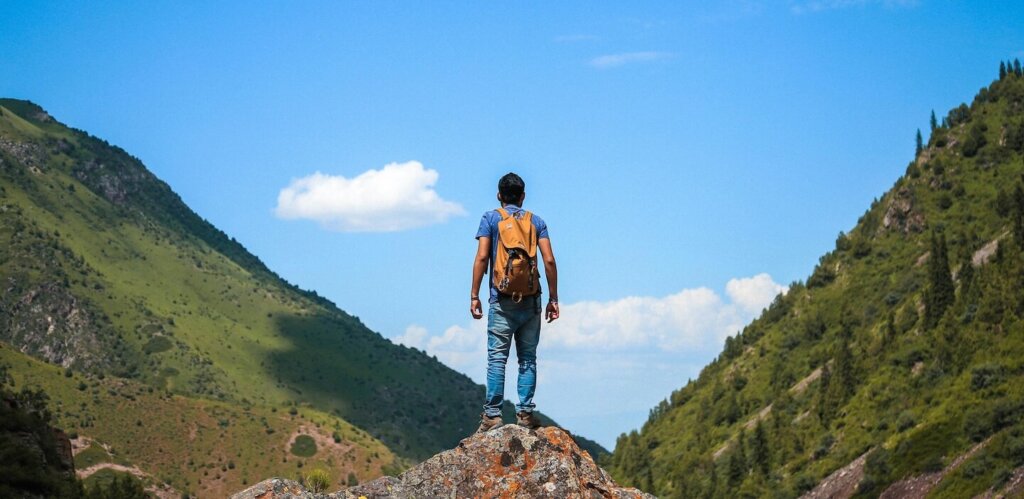Nestled in the lap of the Himalayas, Himachal Pradesh offers some of the most breathtaking trekking experiences in India. From the lush green valleys of Kullu and Manali to the stark, high-altitude deserts of Spiti and Lahaul, this state has something for every kind of trekker—whether you’re a beginner looking for a short weekend hike or an experienced adventurer seeking a challenging high-altitude expedition.
Having personally explored over 20 treks across Himachal, I can confidently say that no two trails here are the same. Each trek has its own unique charm—be it the alpine meadows of Hampta Pass, the sacred glacial lake of Beas Kund, or the grueling high-altitude crossing of Pin Parvati Pass.
The Best Treks in Himachal Pradesh
In this detailed guide, I’ll walk you through the best treks in Himachal Pradesh, covering everything from difficulty levels and best seasons to detailed itineraries and essential tips. Whether you’re planning your first Himalayan trek or looking for your next big adventure, this guide will help you choose the perfect trail.
1. Hampta Pass Trek
The Hampta Pass Trek is one of the most visually striking treks in Himachal Pradesh, offering a dramatic transition from the lush green valleys of Kullu to the barren, moon-like landscapes of Lahaul. Standing at 4,270 meters, the pass provides breathtaking panoramic views of towering peaks, including Indrasan and Deo Tibba.
What makes this trek truly unique is the contrast in landscapes. One day, you’re walking through dense pine forests and meadows filled with wildflowers; the next, you’re traversing rocky moraines and snow patches. The highlight? Camping at Shea Goru, a stunning riverside site surrounded by towering cliffs.
Detailed Itinerary (5-6 Days)
- Day 1 (Manali to Jobra to Chika): The trek begins with a short drive from Manali to Jobra, followed by an easy 3 km hike to Chika, a scenic campsite by the Rani Nallah stream.
- Day 2 (Chika to Balu Ka Ghera): A gradual ascent through forests and meadows leads to Balu Ka Ghera, a vast open ground with stunning mountain views.
- Day 3 (Balu Ka Ghera to Shea Goru via Hampta Pass): The toughest day—steep climb to Hampta Pass, followed by a thrilling descent into Lahaul’s rugged terrain.
- Day 4 (Shea Goru to Chatru & Chandratal): A short trek to Chatru, followed by an optional drive to the mesmerizing Chandratal Lake (Moon Lake).
Best Time to Go
The ideal window for this trek is June to September, when the snow has melted enough to make the pass accessible but the landscapes are still lush.
Difficulty Level: Moderate
While not extremely technical, the steep climb to Hampta Pass requires good stamina. Acclimatization is key, as the altitude crosses 4,000 meters.
2. Beas Kund Trek
If you’re new to trekking, the Beas Kund Trek is the perfect introduction to the Himalayas. This short and sweet 3-day trek takes you to the origin of the Beas River, a glacial lake surrounded by snow-capped peaks.
The trail passes through alpine meadows dotted with wildflowers, offering stunning views of Hanuman Tibba, Friendship Peak, and the Seven Sisters. Unlike more strenuous treks, Beas Kund doesn’t require prior experience, making it ideal for families and first-time trekkers.
Detailed Itinerary (3-4 Days)
- Day 1 (Manali to Dhundi to Bakarthach): A short drive to Dhundi, followed by a 6 km hike through forests and meadows to Bakarthach.
- Day 2 (Bakarthach to Beas Kund and back): A 4 km ascent to the sacred lake, where you can see the glacial waters that feed the Beas River.
- Day 3 (Return to Manali): An easy descent back to Dhundi, followed by a drive to Manali.
Best Time to Go
The best months are May to October, avoiding the heavy snowfall of winter.
Difficulty Level: Easy
With a maximum altitude of 3,700 meters, this trek is manageable for beginners. However, proper footwear and light acclimatization are recommended.
3. Pin Parvati Pass Trek
For seasoned trekkers, the Pin Parvati Pass Trek is one of the most demanding and rewarding adventures in Himachal. This 110 km expedition takes you from the lush Parvati Valley to the barren deserts of Spiti, crossing a dizzying 5,319-meter-high pass.
The trek is not for the faint-hearted—it involves glacial walks, river crossings, and unpredictable weather. But the rewards are unparalleled: pristine valleys, remote villages, and some of the most dramatic landscapes in the Himalayas.
Detailed Itinerary (10-12 Days)
- Day 1-3 (Barshaini to Tunda Bhuj): The initial days take you through forests and meadows, with stops at Kheerganga (known for its hot springs).
- Day 4-7 (Odi Thach to Pin Parvati Base Camp): The terrain becomes rugged as you approach the pass, with steep climbs and possible snowfields.
- Day 8-10 (Crossing into Spiti): The descent into Spiti is equally challenging, ending at the remote village of Mudh.
Best Time to Go
Only attempt this trek between July and September, when the snow has melted enough to make the pass accessible.
Difficulty Level: Challenging
This trek requires prior high-altitude experience, excellent fitness, and proper gear. Weather conditions can change rapidly, so preparedness is crucial.
4. Triund Trek
If you’re short on time but still want a taste of the Himalayas, the Triund Trek is perfect. Just 9 km round trip, this trek starts from McLeodganj and offers stunning sunset views over the Dhauladhar range.
The trail is well-marked and can be completed in a single day, though staying overnight in Triund’s camps under a star-filled sky is highly recommended. For those wanting more adventure, an extension to Snowline Café or Laka Got Glacier is possible.
Best Time to Go
Triund is accessible year-round, though winters (Dec-Feb) can be chilly. The best months are March to November.
Difficulty Level: Easy
Suitable for absolute beginners, including children and seniors.
5. Bhrigu Lake Trek
The Bhrigu Lake Trek is one of Himachal’s most rewarding moderate-altitude treks, taking you to a stunning alpine lake at 4,300 meters that holds deep mythological significance. Named after Rishi Bhrigu, who is believed to have meditated here, the lake remains frozen for most of the year, thawing only between June and September to reveal its emerald-green waters.
What makes this trek special is its perfect blend of accessibility and Himalayan grandeur. Within just 3-4 days, you experience:
- Lush meadows filled with wildflowers (called “Bhrigu’s Garden”)
- Panoramic views of the Dhauladhar and Pir Panjal ranges
- A sacred high-altitude lake surrounded by snow even in summer
Detailed Itinerary (4 Days)
Day 1: Manali to Gulaba to Rola Kholi
- Drive from Manali to Gulaba (1 hour)
- Trek through dense forests to Rola Kholi (5 km, 3-4 hours)
- Campsite at 3,600m with stunning sunset views
Day 2: Rola Kholi to Bhrigu Lake & Return
- Steep ascent through meadows to Bhrigu Lake (5 km, 4-5 hours)
- Spend time at the lake (avoid swimming – water is near freezing)
- Descend back to Rola Kholi
Day 3: Rola Kholi to Gulaba & Manali
- Easy descent through different trail for varied views
- Optional visit to Vashisht Hot Springs to relax sore muscles
Best Time to Visit
- June to September: Lake is visible (best in July-August)
- October: For golden autumn landscapes
Avoid monsoon (mid-July to August) when trails get slippery
Difficulty Level: Moderate
While shorter than other treks, the final ascent to the lake is steep (gain of 700m in 5km). Altitude can affect some trekkers.
6. Indrahar Pass Trek
The Indrahar Pass Trek (4,342m) is Himachal’s answer to Nepal’s famous Annapurna Base Camp – but with far fewer crowds. This 5-day adventure takes you:
- From the hippie vibes of McLeodganj
- Through the iconic Triund meadow
- Across the Dhauladhar range into Chamba Valley
The highlight? Standing atop Indrahar Pass, where you get:
- 360° views of the Pir Panjal and Zanskar ranges
- Sheer drops on the Chamba side that’ll test your nerve
- A rare chance to see Gaddi shepherds with their flocks
Detailed Itinerary (5 Days)
Day 1: McLeodganj to Triund
- Gradual climb through rhododendron forests (9 km, 5-6 hours)
- Overnight at Triund’s famous campsites (2,850m)
Day 2: Triund to Lahesh Cave
- Steeper trail with first views of snow peaks (5 km, 4 hours)
- Sleep in the natural rock shelter of Lahesh Cave (3,600m)
Day 3: Lahesh Cave to Indrahar Pass & Chamba Side
- Most challenging day – steep climb to pass (4,342m)
- Knee-jarring descent into Chamba valley
- Camp near Kuarsi village (rarely visited by trekkers)
Day 4-5: Return via different route
- Either retrace steps or loop back via Illaka Got
Best Time to Visit
- May-June: For clear skies and snow on trail
- September-October: Best stability and autumn colors
Avoid July-August monsoon when the pass becomes dangerous
Also Read: Top Honeymoon Destinations in Himachal Pradesh
Essential Trekking Tips for Himachal Pradesh
1. When to Trek
- Summer (May-June): Ideal for snow views (Hampta, Beas Kund).
- Monsoon (July-Aug): Risky due to landslides (avoid Pin Parvati).
- Autumn (Sep-Oct): Best for clear skies & stable weather.
- Winter (Nov-Apr): Only for snow treks (Chadar, Prashar Lake).
2. Packing Essentials
- Clothing: Layered clothing, waterproof jacket, thermal wear.
- Footwear: Sturdy trekking shoes with ankle support.
- Gear: Trekking poles, headlamp, sunglasses.
- Health: Diamox (for altitude), basic first-aid kit.
3. Permits & Regulations
Most treks in Himachal do not require permits, except for restricted zones like Pin Parvati. Always check with local authorities before heading out.
Final Thoughts: Which Trek In Himachal is Right for You?
- Beginners: Beas Kund, Triund, Prashar Lake.
- Moderate Trekkers: Hampta Pass, Bhrigu Lake, Kareri Lake.
- Advanced Adventurers: Pin Parvati Pass, Indrahar Pass, Deo Tibba Base Camp.
No matter which trek you choose, Himachal Pradesh promises unforgettable landscapes, cultural richness, and a true connection with nature.

